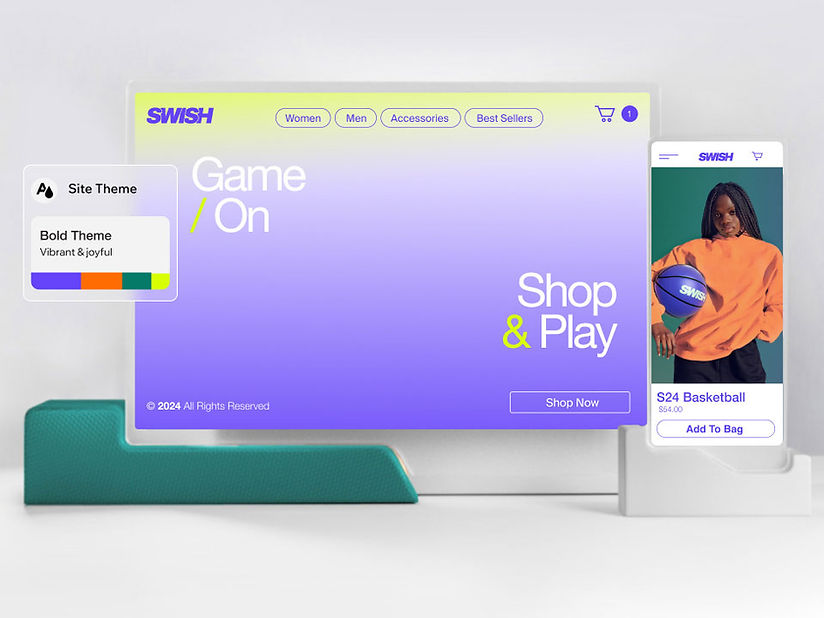What Is A Top-Level Domain (TLD)
Table of Contents
Anyone who is all set to open a website faces the crucial challenge of choosing a perfect domain name to establish a successful online presence. You are presented with a list of top-level domain (TLD) choices and you can select the one that matches your vision and idea.
TLDs serve the purpose of recognizing certain website elements such as owner, purpose or geographic location. Here’s a deep dive into what TLDs are and how they work.
What is a Top-Level Domain?
A top-level domain is the last part of the text in a domain name like .com, .net or .org. TLDs are also called uniform resource locator (URL) or domain extensions and domain suffixes. TLDs are a crucial part of any online marketing strategy for a business. Every website address has a top-level domain.
The top-level domain identifies, organizes and classifies websites based on their purpose, location and content. For instance, a .com is for commercial websites and .edu is for educational websites. TLDs provide users and search engines with an idea behind your website, location and industry.
Types of Top-Level Domains
The internet corporation for assigned names and numbers (ICANN) classifies top-level domains into different types and operates the internet assigned number authority (IANA) to allocate domain names. Let us dig deeper into the types of TLDs.
Generic Top-Level Domains (gTLD)
Generic top-level domains are also commonly referred to as gTLD and anyone can register them as they are open for registration. They are the most popular type of domain extension. The maximum length of TLDs is 63 characters in which most of which are composed of two-three letters.
The use of certain gTLD over time has become strictly controlled to make sure they meet the standards that lead to creating a new category known as sponsored top-level domains. Initially, there are seven gTLD available out of which three domains such as .org, .com and .net can be registered without any restriction.
The commonly used gTLDs include:
- .com – for commercial sites
- .org – for organizations
- .net – for networks
- .biz – for businesses
- .info – for information platforms
Generic-Restricted Top-Level Domains (grTLD)
Generic restricted top-level domains (grTLD) are officially managed by ICANN accredited registrars and require you to present certain proof of eligibility if you wish to register them. They are similar to gTLDs but restricted for special uses.
The grTLD .biz is designated for bonafide commercial and business use. Average blog and affiliate sites may not be eligible to register under grTLD.
Some of the other examples are:
- .name – for individuals
- .pro – limited to certified professionals
Country-Code Top-Level Domains (ccTLD)
Country code top-level domains (ccTLD) are specifically established for countries and territories. There are 312 ccTLD and countries are just identified with a two-letter string. These domains have allocated managers who verify that each ccTLD is working as per the regional policies and meets the standard of legal, culture and linguistic.
ccTLDs are not just used for local businesses and individuals but also widely used by big organizations with regional sites that independently operate. In these cases, the domain extensions serve the same goal as a subdomain. If you plan on using ccTLD on your site, take into account that when searching for the best domain registrar as not all of them offer ccTLD registration.
Some of the commonly used ccTLD include:
- .us – for the United States
- .in – for India
- .es – for Spain
- .it – for Italy
- .fr – for France
- .uk – for the United Kingdom
- .br – for Brazil
Sponsored Top-Level Domains (sTLD)
Sponsored top-level domains also known as sTLD are the domains that are proposed and run by private organizations. Private organizations can be government agencies, businesses or any type of organized groups and organizations have a final say on whether an applicant is qualified to use a particular top-level domain depending on predefined criteria of community theme concepts.
The sTLD only includes a small and limited number of options, some even dated back to the 1980s original domain extensions including .edu, .gov and .mil.
Some of the commonly used sTLDs are:
- .edu – for high educational institutions
- .gov – for Indian governmental agencies
- .travel – for travel businesses
- .museum – for museum organizations
Test Top-Level Domains (tTLD)
Test top-level domains also referred to as tTLD are reserved for documentation and local testing purposes. In the domain name system (DNS) it cannot be installed in the root zone. According to the internet engineering task force (IETF), the reason behind reserving these domain extensions is to reduce the chances of confusion and conflicts.
Test top-level domains are exclusively used by the IETF to test software. The fact that tTLDs are not available for general registration, the tests run smoothly with no risk of conflicts. You cannot register these domains with DNS which means it can freely test software changes without worrying about conflict with the current /future domain name.
The four tTLDs include:
- .invalid – for invalid domain names
- .example – for place holding
- .test – for testing purposes
- .localhost – for usage in local networks
Infrastructure Top-Level Domain
Infrastructure top-level domain is a special category that contains only one TLD i.e. the address and routing parameter area (ARPA). This domain extension is directly managed by the Internet Assigned Numbers Authority (IANA) for IETF.
The .arpa domain is controlled under the guidance of the Internet Architecture Board (IAB). You cannot register the domain as a TLD as it is typically only used for technical web infrastructure motives.
Which TLD is More Popular
The top-level domain extension .com is more popularly used. The domain .com was originally used to designate profitable businesses and now it has become a go-to domain extension. If .com is available while you select a domain extension you should always go for it.
According to the data published by Statista, here are some of the popular TLDs as of June 2023:
| Top-level domains | Global websites in percentage |
|---|---|
| .com | 47.8% |
| .org | 4.7% |
| .ru | 3.7% |
| .net | 2.9% |
| .de | 2.6% |
| .uk | 2.2% |
| .br | 1.8% |
| .au | 1.6% |
| .fr | 1.6% |
| .jp | 1.6% |
As you can see in the above table the top-used domain extension is .com with 47.8% of global websites using it, followed by .org with 4.7%.
What is the Purpose of Different TLDs?
Earlier top-level domains had a very limited and specific purpose but now the domain list has exceeded three digits and restrictions lifted favoring branding and creativity. The basic idea of having different TLDs is that it can help you communicate your website’s information via your domain name.
TLDs make a website look credible, authentic and help to associate it with a specific community or industry. Top-level domain extensions classify the internet and make it simple for people to find what they are looking for. You need to register your website with a gTLD, sTLD or ccTLD. See the types of top-level domains and choose your preference and industry that can help you strengthen your message.
Do TLDs Matter?
Yes, having TLDs matters. It may not directly impact your website’s search engine optimization (SEO) performance, complex and uncommon domain extensions can lead to little traffic and inbound links.
This can be avoided if you pay attention to certain things like how easy your TLD is to remember and pronounce when it is combined with your domain name. Also, keep in mind that when mobile browsing most smartphones displays a button that is dedicated to domain extensions whose default choice is set to .com.
Bottom Line
As we reach the bottom of the article we can say that top-level domains help your website with marketing and branding. It also provides intellectual property protection, helps with SEO and builds trust and credibility among the audience.
TLDs are very important as they identify an organization and its purpose. All the TLDs include an independent registry that is controlled by a specific organization and managed by ICANN.
Choosing the right TLD can be a task but if you aim your goals by targeting a global audience or by country you can choose the right TLD for your website. The most important part is to pick a top-level domain that captures the message of your brand and website.
Frequently Asked Questions (FAQs)
How many TLD servers are there?
There are 1,544 TLD servers.
Is email a TLD?
Yes, email is an active generic top-level domain.
Is Google a TLD?
Yes, Google is a TLD.
What is the maximum length of a TLD?
A TLD has a maximum length of 63 characters.











Add comment
You must be logged in to post a comment.